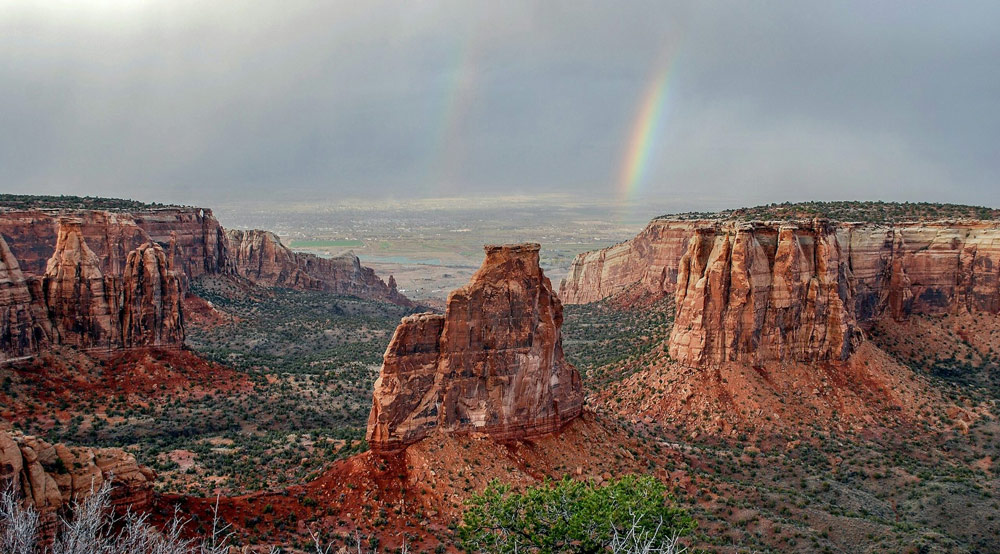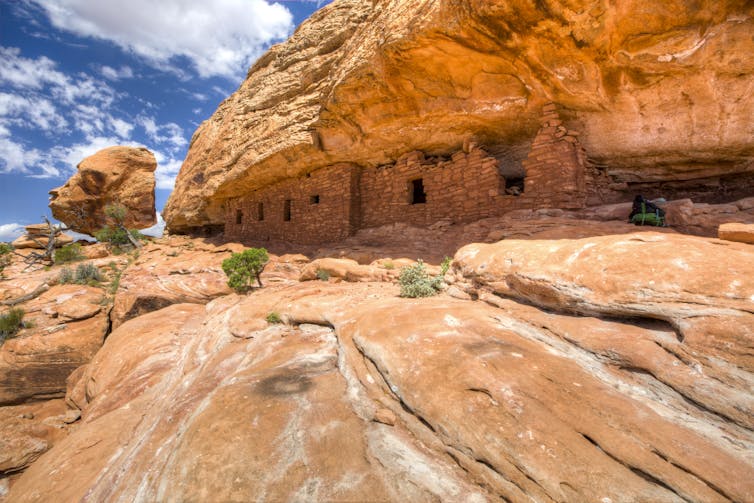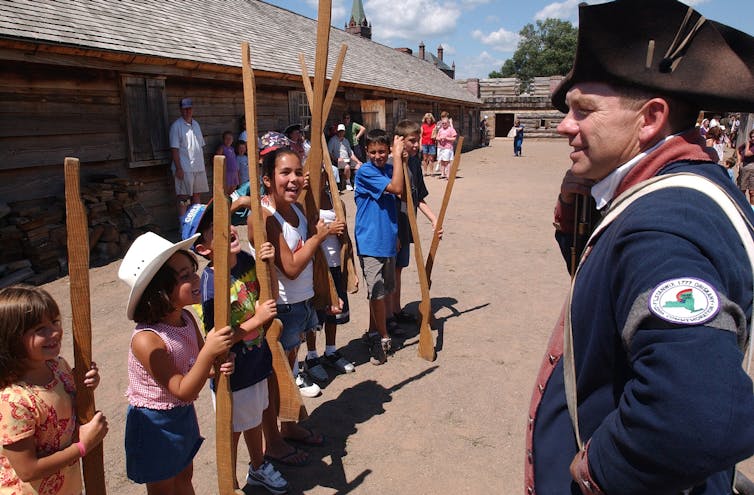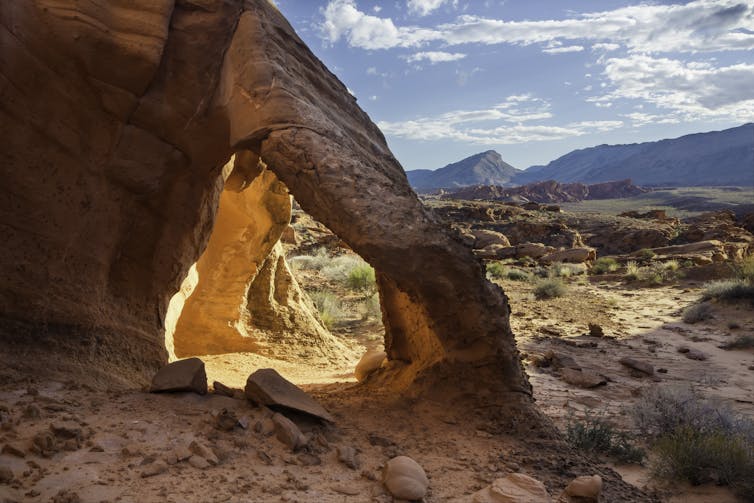
By Monica Hubbard and Erika Allen Wolters
America’s public lands, from its majestic national parks to its vast national forests, are at the heart of the country’s identity.
They cover more than a quarter of the nation and large parts of the West. Some are crisscrossed by hiking trails and used by hunters and fishermen. Ranchers graze cattle on others. In many areas, the government earns money through oil, gas, timber and mining leases.
These federally managed public lands have long enjoyed broad bipartisan support, as have moves to turn them into protected national parks and monuments. Research consistently shows that a majority of Americans want their congressional representatives to protect public access to these lands for recreation. One avenue for protection is the creation of national monuments.
But the status of national monuments can change.
Presidents have expanded and contracted national monuments, as the U.S. saw with Bears Ears National Monument in Utah over the course of the past three presidencies. The rules for the use and maintenance of various public lands can also change, and that can affect surrounding communities and their economies.
The U.S. is likely to see changes to public lands again under the second Trump administration. One of the new administration’s early orders was for the Department of Interior to review all national monuments for potential oil and gas drilling and mining. At least two national monuments that President Joe Biden created in California are among the new administration’s targets.
The avenue for many of these changes is rooted in one century-old law.
The power and vagary of the Antiquities Act
The Antiquities Act of 1906, signed into law by President Theodore Roosevelt, gave Congress or the president the authority to establish national monuments on federal land as a means of protecting areas for ecological, cultural, historical or scientific purposes.
From Theodore Roosevelt on, 18 of the 21 presidents have used the Antiquities Act to create, expand or contract national monuments through a presidential proclamation.
By using the Antiquities Act to create, expand or reduce national monuments, presidents can avoid an environmental impact statement, normally required under the National Environmental Policy Act, which also allows for public input. Supporters argue that forgoing the environmental impact statement helps expedite monument creation and expansion. Critics say bypassing the review means potential impacts of the monument designations can be overlooked.
The Antiquities Act also offers no clarity on whether a president can reduce the amount of area protected by prior presidents. The act simply states that a president designates “the smallest area compatible with the proper care and management of the objects to be protected.” This has led to the shifting of national monument boundaries based on the priorities of each administration.

Bob Wick/Bureau of Land Management via Wikimedia Commons
An example is Bears Ears, an area of Utah that is considered significant to several tribes but also has uranium, gas and oil resources. In 2016, President Barack Obama designated Bears Ears a national monument. In 2017, President Donald Trump signed a proclamation reducing Bears Ears by 80% of its total designated size. The monument’s size and scope shifted a third time when President Joe Biden reestablished Bears Ears to the boundaries designated by Obama.
In the span of just over five years, the monument was created, reduced, then restored to the original monument designation.
The uncertainty about the long-term reliability of a designation makes it challenging for federal agencies to manage the land or assure Indigenous communities that the government will protect cultural, historical and ecological heritage.
Public lands can be economic engines
National parks and monuments can help fuel local economies.
A 2017 study by Headwaters Economics, a nonprofit research group, found that Western rural counties with more public land have had greater economic growth, including in jobs and personal income, than those with little public land. National monuments can also benefit neighboring counties by increasing population, income and employment opportunities.

National Park Service via Wikimedia Commons
While many counties adjacent to public lands may be dependent on natural resource extraction, the establishment of a national monument can open up new opportunities by expanding tourism and recreation. For example, four national parks and monuments in southeastern Utah, including Natural Bridges, drew about 2.4 million visitors who spent nearly US$400 million in surrounding communities.
However, when there is uncertainty over whether public lands will remain protected, communities may be hesitant to invest in that future, not knowing whether it will soon change.
What Congress and the courts could do
There are a few ways to increase the certainty around the future of national monuments.
First, lawsuits could push the courts to determine whether the president has the authority to reduce national monuments. Since the Antiquities Act doesn’t directly address presidential authority to reduce monument size, that’s an open question.
Advocacy groups sued the government over Trump’s authority to shrink Bears Ears National Monument, but their cases were put on hold after Biden expanded the monument again. The U.S. Supreme Court declined to hear other cases in 2024 that argued that a president’s authority to declare and expand national monuments should be far more limited under the law.
Second, Congress could permanently protect designated national monuments through legislation. That would require presidential approval, and the process would likely be slow and cumbersome. Creating White Clouds Wilderness in Idaho, for example, took decades and a public campaign to have it designated a national monument before Congress approved its wilderness designation.
Third, Congress could take new steps to protect public lands. For example, a bipartisan bill titled Public Lands in Public Hands Act could block privatization of public lands and increase and maintain access for recreation. One of the bill’s lead sponsors is U.S. Rep. Ryan Zinke, a Republican from Montana who served as Interior secretary during the first Trump administration. Whether the bill will pass and gain the president’s approval remains to be seen.
Public lands have widespread support
The Antiquities Act has led to the creation of 163 terrestrial and marine monuments and subsequently the protection of land and waters that hold cultural, scientific or historic significance.
These monuments tend to have broad support. During the first Trump administration, there were over 650,000 public comments on Trump’s review of national monument creation. An analysis found that 98% of the comments expressed broad support for both the creation and expansion of national monuments.

Bureau of Land Management
Public lands are more than just physical places. They are spaces where our ideals and values around public land unify us as Americans. They are quintessentially American – and in many ways define and shape the American identity.
![]()
Monica Hubbard is Associate Professor of Public Policy and Administration at Boise State University. Erika Allen Wolters is Assistant Professor of Political Science at Oregon State University.




























awwww- no says
I don’t know how these changes make us great again. It’s 2025- moving backwards in time isn’t a good policy.
Deborah Coffey says
Trump will likely sell all the public lands he can.
https://www.americanprogress.org/article/trump-quietly-plans-to-liquidate-public-lands-to-finance-his-sovereign-wealth-fund/